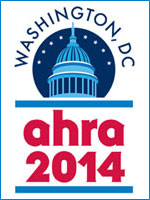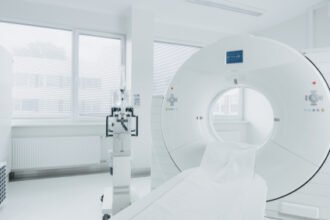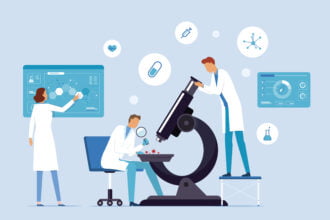Advancements in healthcare have improved our understanding of diseases and how to treat them, but the largest determinants of our health are behavioral and environmental factors. Poor eating habits, physical inactivity, socioeconomic factors, access to care, or a lack of health education can trump genetic dispositions and medical advancements.
Healthcare spending makes up 18 percent of the U.S. gross domestic product. Although 50 percent of what makes us healthy are our own behaviors, according to data from the Boston Foundation and the New England Healthcare Institute, we only spend 4 percent on promoting and educating individuals on such healthy behaviors. According to the Centers for Disease Control and Prevention, chronic diseases account for 75 percent of healthcare spending. With such diseases on the rise, this level of national healthcare spending is unsustainable. The key link in this equation is the end patient. American consumers want to be healthy and have the best quality of life possible, but they don’t always have the tools, influencers, or motivators to get them there. Empowering Patients Through Engagement Frost & Sullivan’s 2015 survey on consumer attitudes on health and wellness concluded that 72 percent of people believe it’s important to use electronic health records to keep track of their personal health information, and 62 percent of younger consumers use or would use mobile apps or wearables to track their wellness and fitness. Over the past several years, fast food chains and soft drink companies have seen dramatic drops in sales as consumers become smarter about what they put into their bodies. Patients now have more choices in the healthcare systems they visit and the treatments they receive, and they’re gaining greater control of their own well-being. As healthcare spending increases, the U.S. Department of Health and Human Services has pledged to invest over $840 million in IT incentives to help alleviate the strain. The goal is to help healthcare systems improve outcomes, trim unnecessary tests and hospitalizations, and reward players for delivering positive outcomes. To do this, the department is shifting reimbursement models to emphasize quality over quantity, such as tying 85 percent of Medicare payments to the quality or value of care that health systems provide. Potential Concerns for Hospital Administrators Innovations in medical technology and the adoption of smart devices make patient empowerment more accessible. However, widespread patient empowerment remains uncharted territory for many healthcare organizations, and there are key considerations at hand:
- Litigation: The more healthcare and IT become integrated, the more information can be mobilized to the end patient and the more questions arise as to where the lines of responsibility and required action lie. For example, if a wearable senses a potential immediate event and sends the information to the patient’s EHR, is his or her primary physician responsible for addressing it? If so, within what time frame?
- Security: With data sent between more connected devices, the edge of security is becoming obsolete. Who technically owns the data, and at what point do patients become responsible for the security of their information? How amplified is the risk of exposure when there are multiple end points for each patient’s information?
- Adoption: The world’s most sophisticated healthcare application or program is obsolete if no one actively uses it, and consumer adoption and preferences are daunting, fleeting factors. Leaders have to grapple with many unknowns when it comes to predicting patient adoption of new programs and applications. However, with the right incentives and platforms, these concerns can be overcome.
4 Ways to Engage and Empower Patients Empowering and enabling the end patient is critical in achieving cost efficiencies and improved care outcomes. Although there will inevitably be exceptions to the rule, most individuals are motivated to attain their best health. Some best practices and key considerations for deploying patient engagement programs include: 1. Creating risk/reward scenarios. If you’re a safe driver, you get better auto insurance rates. Similarly, patients who engage and succeed in programs to improve their health should be rewarded with more affordable healthcare and a better quality of life. In fact, studies have shown that financial incentives are the biggest motivators for patients to improve their health and habits. HealthMine (formerly SeeChange Health Solutions) is a great example of a system that utilizes incentives. The more than 120,000 members of its three-year health incentive program were financially compensated for meeting certain health “challenges” and encouraged to get proactive screenings for cancer and routine wellness checks. By the third year, hospital readmissions had dropped by 50 percent. 2. Teaching important soft skills. Documentaries, studies, and TV shows have all highlighted the education gaps around what constitutes healthy eating and lifestyles. Given many people’s genetic predispositions for certain health issues, proper education is vital to high-quality healthcare. We must educate individuals and teach them to make better choices for themselves and their families. Nutrition is one of most commonly misunderstood facets of health and well-being. According to the U.S. Department of Agriculture, 23.5 million Americans live more than a mile from a supermarket in areas the department refers to as “food deserts.” Without convenient access to fresh, healthy food and without knowing the importance of healthy eating, many people continue to rely on processed or fast foods that are detrimental to their health. 3. Leveraging medical technology. As The Wall Street Journal reported last year, wearable sensors now include necklaces that can monitor heart function and check the amount of fluid in the lungs, contact lenses that can track glucose levels or eye pressure in glaucoma patients, and headbands that capture brain waves. These mind-bending innovations, along with the hundreds of thousands of downloadable health apps available on smartphones and smartwatches, can help patients proactively predict and identify episodes. They also help patients leave the hospital sooner, remain in their homes longer, and access professional care on demand whenever they need it. Ochsner Health System has embraced the use of healthcare applications by investing in its own “O Bar” that allows patients to work one-on-one with technology specialists to download pertinent applications focused on wellness, nutrition, fitness, diabetes, smoking cessation, and more. 4. Empowering caregivers. The Family Caregiver Alliance estimates that more than 52 million people identify as caregivers to people 18 and over. Empowering these caregivers with the right information and supportive tools has long been overlooked. As one of the biggest opportunities for change, prevention can be greatly improved through collaborative technologies such as the clinical research initiative called PROSPECT (“Promoting Respect and Ongoing Safety Through Patient-Centeredness, Engagement, Communication, and Technology”). PROSPECT allows patients in the ICU and oncology units to view all schedules, treatments, medications and care team members on a tablet. Patients and their families can also collaborate with physicians in real time through an integrated messaging system. Standards for modern healthcare are changing, and organizations that master patient engagement and empowerment through the use of technology will win the endgame. Not only will their patients be healthier, more informed, and more involved, but they’ll also become evangelists who promote their respective healthcare providers because, truly, what’s more, important than our health?








